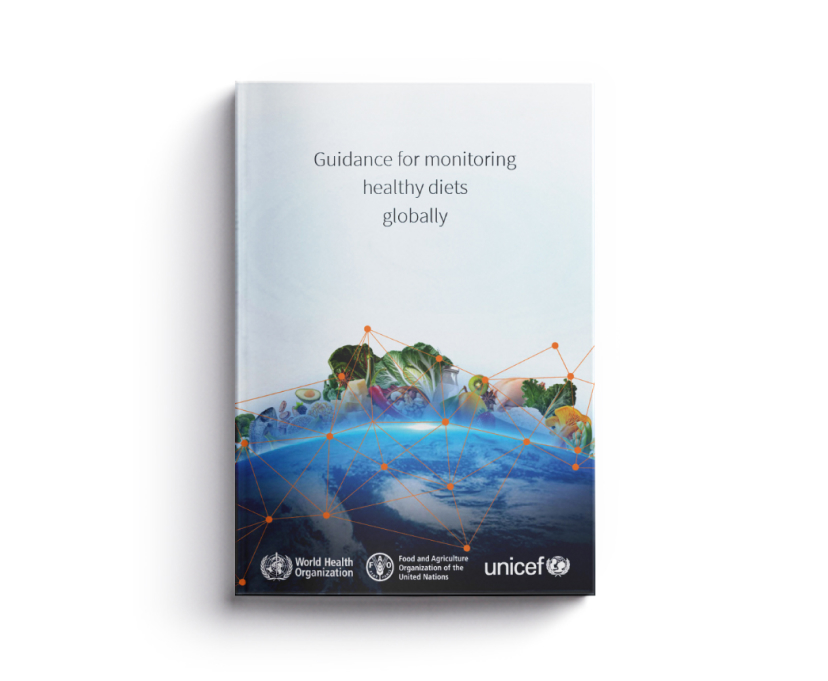

The collection and use of the right types of data makes the task of improving nutrition through healthy diets that much more effective. Food composition data – information about the nutrients in foods – helps us assess whether diets are adequate – one of the four core principles of a healthy diet. Food consumption data – or what individual people eat – is of particular relevance in the case of those most vulnerable to malnutrition: adolescent girls, pregnant and breastfeeding women, and small children. Putting consumption and composition data together is vital to identify gaps and opportunities for effective action to improve nutrition. Such data should underpin decisions about how best to allocate limited resources, and design policies and programmes to increase access to, and consumption of, nutritious foods.
With consensus reached on the core principles of healthy diets, the world needs indicators to gauge the extent to which these principles are being respected – in other words, a way to tell how healthy any given diet is. FAO, WHO and UNICEF have joined forces to launch the Healthy Diets Monitoring Initiative. The initiative aims to build consensus on how best to measure healthy diets, and then promote the large-scale implementation of methods and indicators with global and national stakeholders. To this end, in 2024, FAO, UNICEF and others technically supported Bangladesh, Brazil, Malawi and Switzerland to request that dietary diversity – the one core principle of a healthy diet for which we have a validated indicator and abundant data – be included as an indicator of Global Goal 2, which calls for an end to hunger and to all forms of malnutrition.

While food consumption data are being increasingly collected in many countries, these data often remain confidential, which limits their potential to influence policy and programmes. Given the variety of methods and indicators used to collect such data, consolidating and sharing the data from various geographic locations and moments in time is anything but straightforward.
The FAO/WHO Global Individual Food Consumption Data Tool (FAO/WHO GIFT) is an open-access platform containing individual quantitative food consumption data for dozens of nations. The platform is a growing repository, intended to provide harmonized data (that is, data that are comparable across countries and periods), and supply best practices on data collection to policymakers and researchers.


Even where dietary data are readily available, policymakers are frequently unaware of their existence or practical use. To remedy this, FAO has created the first centralized location for sharing relevant statistics on all forms of dietary data. The FAOSTAT Food and Diet domain site provides robust numbers, including nutrient intake and dietary diversity from three sources which reflect data at national, household and individual level. With the Food and Diet domain, users can quickly assess what data are available in their context, and obtain specific guidance on the strengths and limitations of these various types of data for several decision-making purposes. Available household- and individual-level data are disaggregated by sex, age, rural/urban status and income level, allowing policymakers to address specific nutritional gaps and target agrifood systems interventions to specific populations.
Higher intrinsic food needs; social and societal norms; structural inequalities; and the demands of pregnancy and breastfeeding all make women of reproductive age nutritionally vulnerable. In low- and middle-income countries, their diets, frequently dominated by staple foods, are often poor in vitamins and minerals, with unwanted health repercussions. Low dietary diversity in turn places nutrient adequacy at risk, thus jeopardizing two out of four core principles of healthy diets. Measuring dietary diversity has therefore been recognized as a priority. A decade in the making by FAO and partners, an indicator to that effect, Minimum Dietary Diversity for Women (MDD-W), is easy to use and versatile, and can be readily incorporated into large-scale national surveys, impact evaluations and research. Many organizations and countries now use MDD-W as a measure of the impact of actions to improve diets.
Robust statistics on food and nutrient availability, and household and individual level food and nutrient consumption, are needed to help develop policies and programmes that enable healthy diets for all.
Lynnette Neufeld, Director, Food and Nutrition Division, FAO